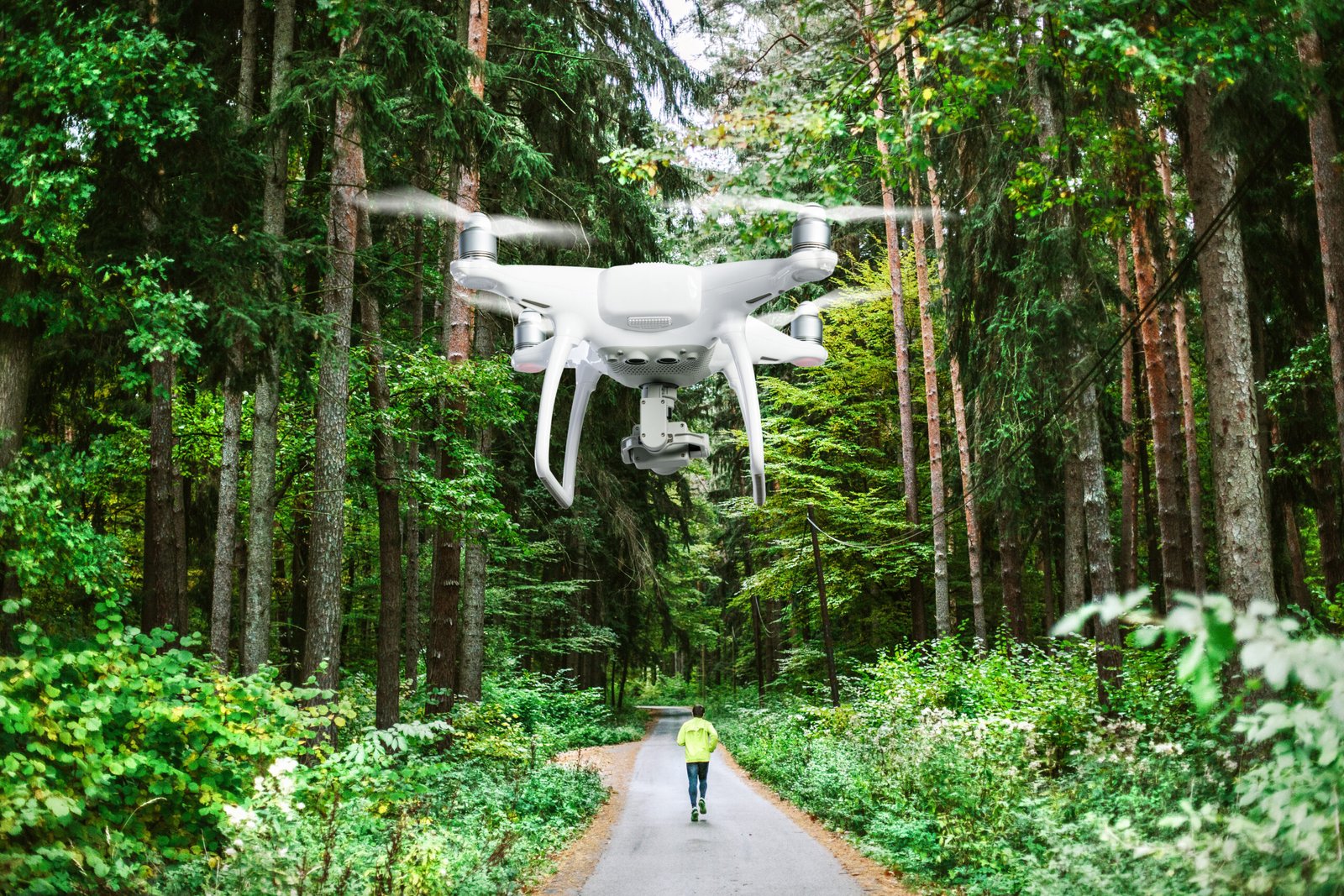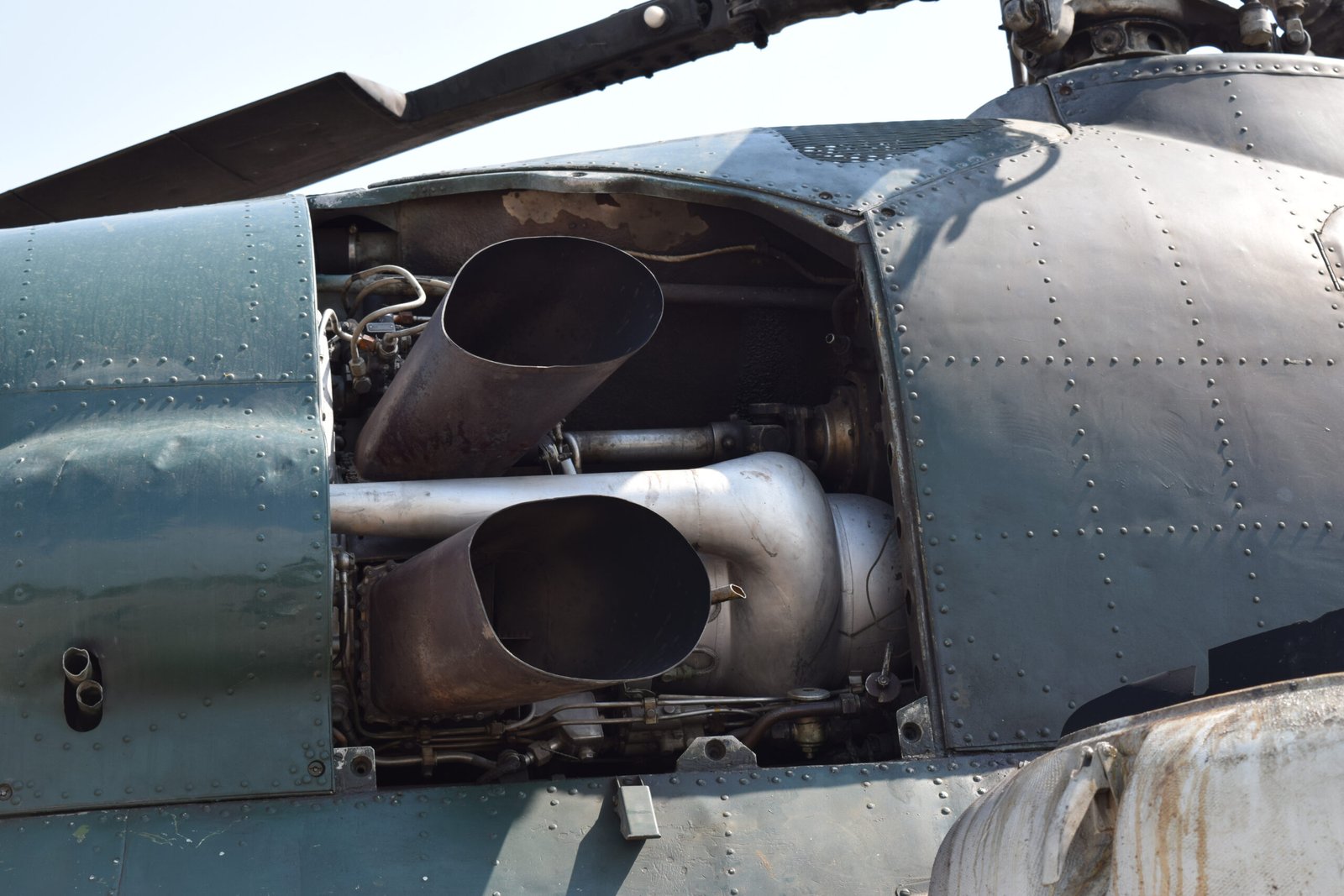FAA
Jet Setters: Exploring the Benefits of Private Aviation
In an era where time is increasingly precious, private aviation stands out as a beacon of efficiency and luxury. The convenience of flying on your schedule, avoiding crowded terminals, and experiencing personalized service makes it a preferred choice for many business executives and leisure travelers alike. But beyond the plush cabins and quick getaways lies a fascinating world powered by cutting-edge technology and training innovations that are transforming the aviation landscape.
*Aviation and Technology Training**
At the heart of this transformation is a robust emphasis on aviation technology training, which has become vital for aspiring pilots and industry professionals. Modern flight simulators play an essential role in preparing pilots for real-world scenarios without leaving the ground. These sophisticated devices replicate various flight conditions—from adverse weather to emergencies—allowing trainees to hone their skills safely. This immersive experience not only boosts confidence but also significantly reduces risks associated with piloting aircraft.
*Discovering Online Resources**
For those looking to dive deeper into the world of aviation, numerous blogs, websites, and social media platforms are available to quench your curiosity. Some standout blogs include:
1. **Fighter Sweep** – A blog focused on military aviation.
2. **Airline Reporter** – Offers insights into commercial airlines.
3. **The Points Guy** – Focuses on travel tips that often intersect with private flying benefits.
Websites like Aviation Week provide industry news, while social media platforms like Instagram and Twitter have vibrant communities sharing stunning aerial photography or discussing technological advancements in flight.
If you prefer video content, YouTube channels such as “Mentour Pilot” or “Captain Joe” demystify complex topics through engaging visuals—perfect for visual learners.
*Online Aviation Courses and Ground Schools**
The rise of online education has revolutionized how aspiring pilots can acquire necessary certifications. Numerous institutions offer online courses tailored specifically for ground school training, covering everything from aerodynamics to navigation techniques. Websites like Sporty’s Academy or Pilot Institute provide comprehensive curricula that students can access at their convenience.

In addition to pilot training, these programs often connect students with job opportunities in the aviation sector upon completion—a significant advantage in a competitive field where connections matter just as much as qualifications.
*The Rising Influence of Drones**
Another exciting facet of modern aviation is the burgeoning drone industry. With applications ranging from photography to delivery services, drones have carved out their niche in both commercial sectors and personal usage. Understanding FAA regulations is critical here; resources such as the official FAA website offer guidance on licensing requirements and operational rules for drone enthusiasts.
Drones also pave new paths for jobs within aviation—think drone operators or maintenance technicians—as businesses increasingly explore innovative uses for UAVs (unmanned aerial vehicles).
*Connecting with Industry Resources**
To further enhance your knowledge about private aviation and its myriad fields, consider bookmarking essential FAA links that provide updates on regulations, safety protocols, and new initiatives shaping air travel today.
In conclusion, whether you’re an ambitious pilot-in-training or simply someone enamored by all things airborne, private aviation offers more than just luxurious escapes—it opens doors to rich educational resources and career opportunities while embracing cutting-edge technologies like never before. So why not strap in? The sky isn’t just a limit; it’s an invitation waiting to be explored!
Navigating the Skies: A Look at the Evolution of Air Travel
The story of aviation is one that soars with innovation and progress. From the Wright brothers’ first flight in 1903 to today’s high-tech jetliners, air travel has transformed dramatically over the years. Central to this evolution is the intersection of aviation and technology, particularly in areas like training, simulation, and online education.
Modern pilots no longer rely solely on traditional methods of instruction. Instead, they immerse themselves in advanced flight simulators that replicate real-world flying conditions. These state-of-the-art machines offer an unparalleled opportunity for trainees to hone their skills without ever leaving the ground. With realistic controls and immersive environments, simulators are invaluable tools for both novice pilots and seasoned professionals looking to sharpen their abilities or learn new aircraft systems.
For those passionate about aviation who want to stay informed or connect with others in the field, a plethora of resources exists online. Numerous blogs and websites cater to various aspects of aviation — from pilot training tips to industry news. Some popular blogs include “The Aviationist,” which covers military aviation stories; “Airline Pilot Life,” offering insights from professional pilots; and “Flying Magazine,” a treasure trove of advice for general aviators. Social media platforms also serve as excellent venues for networking and sharing knowledge. Twitter accounts like @AvGeekNation highlight fascinating aerial content while Facebook groups connect fellow enthusiasts across the globe.
Education is another cornerstone of modern aviation. With advancements in technology comes a rise in online courses designed specifically for aspiring aviators. Ground schools now offer flexible learning options through e-learning modules covering everything from navigation techniques to weather patterns. Institutions such as Embry-Riddle Aeronautical University and Purdue University provide comprehensive programs that can be completed remotely, making it easier than ever for individuals keen on pursuing careers as pilots or other aviation professionals.
As we delve deeper into this world, we cannot overlook the rapid proliferation of drones—unmanned aerial vehicles that have carved out their own niche within aviation. Drones are not just toys; they’re transforming industries ranging from agriculture to filmmaking by providing innovative solutions previously considered impractical or too costly. The Federal Aviation Administration (FAA) plays a crucial role here, establishing regulations that govern drone operations while ensuring safety within national airspace.
Aspiring pilots should familiarize themselves with FAA resources available online—such as their official website—which provides information on licensing requirements, safety guidelines, and updates regarding regulations affecting both manned aircraft and drones alike.
As technology continues its relentless march forward, opportunities abound within the aviation sector—from piloting commercial airlines to operating sophisticated drones or even working behind-the-scenes in maintenance roles. The demand for qualified personnel remains strong; thus job seekers equipped with proper training stand poised for success.
In summary, navigating today’s skies means embracing change through technological advancements while continuing an age-old passion for flight. By exploring diverse educational avenues—be it through simulator training or online courses—and staying connected via blogs and social media channels, anyone can embark on an exciting journey into this dynamic field where innovation meets adventure every day!

Aviation Innovations: How Drones Are Revolutionizing Delivery Systems
In an age where speed and efficiency reign supreme, the aviation industry is undergoing a transformation that promises to redefine logistics. At the forefront of this change is drone technology, ushering in a new era of delivery systems that are not only faster but also more sustainable. As we delve into this revolution, it’s crucial to understand the interplay between aviation training and the burgeoning world of drones.
To begin with, proper training remains paramount in ensuring safety and effectiveness within aviation. The advent of sophisticated flight simulators has made it easier for aspiring pilots and drone operators to hone their skills without ever leaving the ground. These simulations provide realistic environments that replicate various conditions pilots might face, from turbulent weather to emergency scenarios. This immersive experience fosters better decision-making skills while minimizing risks associated with traditional flight training.

For anyone looking to stay updated on aviation trends or seeking valuable resources, the internet offers a wealth of information through dedicated blogs and websites. Some notable mentions include Aviation Week Network, which covers everything from aerospace technology to defense; Flying Magazine, renowned for its insightful articles on pilot experiences; and The Drone Girl blog which focuses specifically on drone innovations. Social media platforms like Twitter and Instagram also serve as vibrant hubs for aviation enthusiasts. Follow hashtags such as #DroneDelivery or #AviationNews for real-time updates from industry experts and hobbyists alike.
Moreover, educational opportunities abound for those eager to explore careers in aviation or deepen their knowledge about drones. Numerous online courses cater to both novice learners and seasoned professionals looking to enhance their skills. Websites like Coursera or Udemy offer specialized programs ranging from basic piloting techniques to advanced UAV operations—perfectly blending theoretical knowledge with practical application.
Ground schools play an essential role too, providing structured learning environments where students can gain foundational knowledge before stepping into aircraft cockpits or controlling drones. These institutions cover critical areas such as air traffic regulations, navigation principles, meteorology, and more—ensuring that future aviators are well-prepared for any challenge they might encounter.
As demand grows for unmanned aerial vehicles (UAVs), so do job opportunities within this exciting sector. Drone pilots are increasingly sought after in industries ranging from agriculture to real estate photography and package delivery services. Companies are leveraging UAVs not only for their speed but also for their ability to access hard-to-reach areas safely and cost-effectively.
The Federal Aviation Administration (FAA) plays a vital role in regulating these advancements within drone technology. Their guidelines ensure that drone operations maintain safety standards while fostering innovation in commercial applications. For those interested in pursuing a career related to drone usage or simply wanting robust information on regulations, visiting FAA’s website is invaluable.
In conclusion, we stand at a pivotal moment in aviation history where drones are reshaping delivery systems around the globe. With continuous advancements in technology paired with comprehensive training programs designed for both traditional pilots and aspiring drone operators, the sky is not just the limit—it’s merely the beginning! Whether you’re contemplating a career shift into aviation or simply fascinated by these flying machines’ potential impact on daily life , now is undoubtedly an exciting time to get involved!
Skyward Bound: Exploring the Best Aviation Experiences Around the Globe
Aviation is an exhilarating field where technology, passion, and precision intersect. From aspiring pilots to seasoned aviators, there’s a world of experiences waiting to be explored. Whether you’re looking to enhance your skills through training, stay updated with industry trends via blogs and websites, or dive into the burgeoning realm of drones, aviation offers something for everyone. Let’s embark on this journey through some of the best aviation experiences available worldwide.
First off, let’s talk about aviation and technology training. The future of flying hinges on cutting-edge simulators that allow budding pilots to hone their skills without ever leaving the ground. Simulators provide a realistic environment where one can practice maneuvers, emergency procedures, and navigation techniques under varying conditions. Leading institutions around the globe utilize state-of-the-art software that replicates real-world scenarios—some even featuring virtual reality components! This blend of tech and training not only enhances proficiency but also builds confidence in handling complex situations.
Now that you’re geared up for your flight training adventure, it’s essential to stay connected with the aviation community. Numerous blogs and websites offer valuable insights and discussions about everything from flight techniques to industry news. Some popular platforms include Aviation Week Network, The Points Guy for travel enthusiasts, and Airliners.net for aircraft spotting aficionados. Social media is another treasure trove; following accounts like @theaviationist on Twitter or Instagram could lead you down a rabbit hole of breathtaking aerial photography and inspiring stories from fellow aviators.
For those who prefer structured learning environments or are simply looking to expand their knowledge base online, several online aviation courses are available today. Institutions such as Embry-Riddle Aeronautical University provide comprehensive ground school programs covering topics like meteorology, navigation systems, and regulations set forth by the Federal Aviation Administration (FAA). These courses cater not just to aspiring pilots but also to individuals interested in roles such as air traffic control or aviation management.

Speaking of careers in aviation—let’s take a moment to consider job opportunities within this dynamic field! With commercial airlines expanding routes and private flying gaining popularity among business executives and leisure travelers alike, qualified pilots are always in demand. Websites like Pilot Career Center offer tools for job seekers while providing information about salary expectations based on experience levels across various sectors within aviation.
As we soar into modern advancements shaped by technology, drones have become a significant aspect of both recreational flying and professional applications—think aerial photography or agricultural monitoring! The FAA has established guidelines for drone usage that aspiring operators must understand thoroughly before taking flight. For those interested in becoming certified remote pilot operators through Part 107 licensing requirements set by the FAA—a worthy venture considering how rapidly this sector is growing—there are plenty of resources available online.
To wrap things up neatly amid all these exciting avenues awaiting exploration: if you’re serious about delving deeper into aviation culture while keeping abreast with regulations or safety protocols enforced by authorities like the FAA itself—their website offers extensive resources including educational materials tailored specifically for new pilots!
With so many paths beckoning you skyward—from simulator training sessions that mimic life at altitude to engaging with fellow enthusiasts across social media platforms—it’s clear that every corner of the globe holds unique chances for adventure in aviation! So suit up—and let your aspirations take flight!
The Hidden World of Cockpits: A Pilot’s Perspective on Modern Flight
When you think of aviation, the first images that might come to mind are sleek aircraft soaring through azure skies, passengers basking in comfort, or even the bustling activity at an airport. However, there’s a hidden world that many overlook—the cockpit. It’s a sanctuary of technology, training, and skill where pilots transform dreams of flight into reality.
In today’s aviation landscape, technology plays a pivotal role in shaping how pilots are trained and how they operate. Simulators have advanced beyond simple graphics and basic functions; they now offer immersive experiences that closely mimic real-life flying conditions. High-fidelity simulators replicate everything from turbulence to emergency scenarios, allowing aspiring aviators to hone their skills without ever leaving the ground. These simulators not only save time and resources but also provide invaluable training for managing unexpected situations.
For those looking to dive deeper into aviation knowledge, numerous blogs and websites cater to enthusiasts and professionals alike. Among the top choices are **AirlineReporter**, which offers insights directly from industry insiders, and **The Aviation Herald**, known for its detailed accident reports and safety analysis. Social media platforms like Instagram feature accounts such as @flywithcaptainmike showcasing stunning aerial views alongside pilot experiences. On Twitter, follow @AviationWeek for the latest industry news and trends.

Additionally, online courses have revolutionized how we approach learning about aviation. Ground schools like **King Schools** or **MZeroA** provide comprehensive programs covering everything from private pilot licensing to advanced instrument ratings—all accessible from your living room! Many of these courses combine video lessons with interactive quizzes ensuring that students grasp complex subjects effectively.
As the demand for qualified pilots continues to rise in the face of increasing air travel, job opportunities abound across various sectors—commercial airlines, cargo carriers, charter services, or even corporate jets. Organizations such as **Pilot Career Center** offer up-to-date job listings while providing resources for crafting resumes tailored specifically for aviation roles.

With technological advancements reshaping our skies further still is the emergence of drones—unmanned aerial vehicles (UAVs) changing everything from agriculture to photography. Drones are being integrated into commercial operations more than ever before; this means new career paths are emerging within this niche market! For those intrigued by drone piloting, consider exploring certification options through resources provided by organizations like the FAA or specialized drone schools.
Navigating regulations is crucial in both manned and unmanned flight operations. The Federal Aviation Administration’s website is a treasure trove of information—from rules governing pilot certifications to updates on airspace regulations affecting all operators. Bookmarking essential links can simplify staying informed on regulatory changes that could impact flying careers or hobbyist pursuits alike.
In conclusion, aviation is more than just flying; it’s about mastering a blend of technology and skillset that evolves continuously with modern demands. The cockpit encapsulates this journey—a place where rigorous training meets cutting-edge innovation—and it beckons those ready to take on the challenge. Whether you aspire to become a professional pilot navigating traditional routes or explore emerging fields like drone operations, there’s never been a better time to step into this exciting realm!




